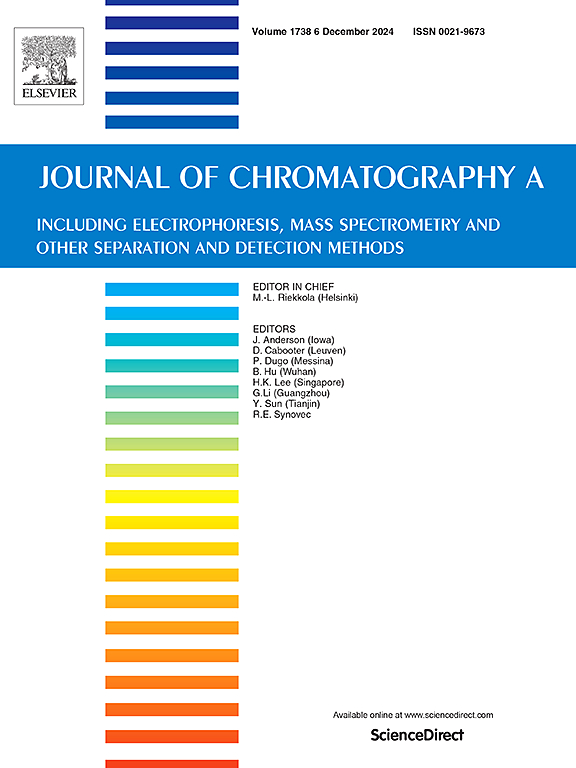Injection artifacts in odorant analysis by gas chromatography
IF 3.8
2区 化学
Q1 BIOCHEMICAL RESEARCH METHODS
引用次数: 0
Abstract
Odor-active compounds are major quality parameters in food and other consumer products. In the analysis of odorants, gas chromatography (GC) plays a dominant role and is particularly indispensable for odorant screening by GC–olfactometry (GC–O). Whereas artifact formation during workup before GC analysis has been widely discussed, artifact formation during GC injection has not been adequately addressed so far. Using a set of 14 test compounds, we evaluated ten different GC injection approaches. Artifact-producing reactions were particularly 1,2-eliminations. Linalyl acetate additionally showed [1,3]-sigmatropic shifts. On-column injection was confirmed as the gold standard, with virtually zero artifact formation observed not only with classic cold on-column injection in the oven, but also with on-column injection in a programmable temperature vaporizing (PTV) injector. Substantial artifact formation was observed when a high fixed injector temperature was combined with splitless injection. This applied to the injection of liquid samples but even more so to headspace solid-phase microextraction (HS–SPME) approaches. In conclusion, we recommend using on-column injection whenever aiming at a representative odorant spectrum, such as in GC–O. In targeted analysis, critical approaches such as SPME should be carefully tested for artifact formation. For the evaluation of the artifact formation potential of different injection approaches, cedryl acetate emerged as an excellent test compound.
气相色谱法分析气味中的注射伪影。
气味活性化合物是食品和其他消费品的主要质量参数。在气味分析中,气相色谱法(GC)起着主导作用,在气相色谱-嗅法(GC- o)筛选气味剂中尤为重要。尽管在GC分析之前的作业过程中形成的伪影已经被广泛讨论,但在GC注入过程中形成的伪影迄今尚未得到充分解决。使用14种测试化合物,我们评估了10种不同的气相色谱进样方法。产生人工制品的反应主要是1,2消去反应。乙酸芳樟醇也表现出[1,3]-异位偏移。柱上进样被确认为金标准,不仅在烤箱中进行传统的冷柱上进样,而且在可编程温度汽化(PTV)进样器中进行柱上进样,几乎没有观察到伪影形成。当较高的固定注射温度与无分裂注射相结合时,观察到大量的伪影形成。这适用于液体样品的注射,但更适用于顶空固相微萃取(HS-SPME)方法。总之,我们建议在针对具有代表性的气味光谱时使用柱上进样,例如GC-O。在目标分析中,像SPME这样的关键方法应该仔细地测试工件的形成。为了评估不同注射方式的伪影形成潜力,醋酸雪松酯成为一种很好的测试化合物。
本文章由计算机程序翻译,如有差异,请以英文原文为准。
求助全文
约1分钟内获得全文
求助全文
来源期刊

Journal of Chromatography A
化学-分析化学
CiteScore
7.90
自引率
14.60%
发文量
742
审稿时长
45 days
期刊介绍:
The Journal of Chromatography A provides a forum for the publication of original research and critical reviews on all aspects of fundamental and applied separation science. The scope of the journal includes chromatography and related techniques, electromigration techniques (e.g. electrophoresis, electrochromatography), hyphenated and other multi-dimensional techniques, sample preparation, and detection methods such as mass spectrometry. Contributions consist mainly of research papers dealing with the theory of separation methods, instrumental developments and analytical and preparative applications of general interest.
 求助内容:
求助内容: 应助结果提醒方式:
应助结果提醒方式:


